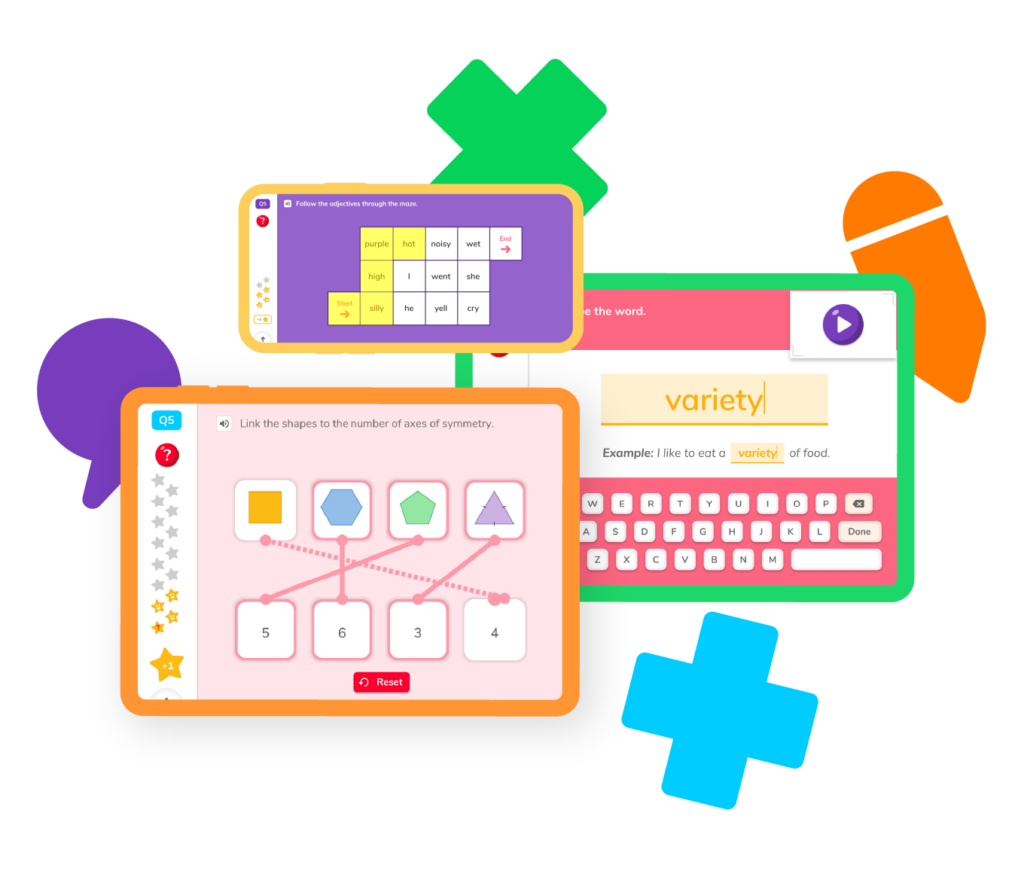More, more, more! Addition is all about making more of something, whether it’s making a number bigger or giving someone more of what they need or want. It’s also a crucial skill to understand if you hope to become a math expert. With a little bit of practice and a whole lot of determination, you’ll get addition down in no time!

Like subtraction, addition starts simple but gets more involved as you climb through 1st, 2nd, and 3rd grade. You can learn different skills to solve your addition problems with ease — and prepare for addition in the real world! Let’s take a closer look at the fun things you can do with addition.
Find out how addition can help you understand how to multiply numbers together.
Learn about this foundational concept when tackling addition problems.
See how grouping digits can help us break down an addition equation!
See how addition can help you understand how to multiply numbers together.
Learn about this foundational concept when tackling addition problems.
See how grouping digits can help us break down an addition equation!
While addition is one of the most basic math skills, it may be tough to get the hang of it at first. Just know you are not alone. Here are some of the more frequently asked questions about addition.
There aren’t as many terms you will need to know to understand addition as there are to understand subtraction. You need to know two basic terms to understand the definition of addition:
There are plenty of strategies you can use to solve addition problems. Some of the most common include using a number line, counting on your fingers, visualizing the problem (turning each addend into a picture so you can ‘see’ how many you have when you put them together), and more. Explore these strategies in the Skills section above.
You will begin to practice addition in kindergarten. You might receive three blocks, and your teacher asks you to take two more blocks. How many blocks do you have now? You will start to practice addition problems in first grade, then get into more advanced problems in 2nd and 3rd grades.
Yes, you can add fractions together. You’ll likely tackle these types of problems in third or fourth grade. Your teacher will show you how to add fractions with like and unlike denominators. When adding fractions with unlike denominators, you’ll need to make sure the denominators are the same. This means you will have to understand multiplication to successfully add fractions. For example, if you want to add 1/3 and 2/5 together, you will need to know that 3 x 5 = 15, and then multiply the top numbers by 5 and 3, respectively.
This will leave you with 5/15 and 6/15, which you can add together to get 11/15.
All the time! You will use addition to predict how much money you will have after you get paid, how many items you will need for projects and hobbies, how many RSVPs you have received for a birthday party, and so much more! It’s one of the most important skills you can learn.

Parents, sign up for a DoodleMath subscription and see your child become a math wizard!

Book a chat with our team
If you’d like to use Doodle’s browser version, please visit this page on a desktop.
To log in to Doodle on this device, you can do so through our apps. You can find out how to download them here: